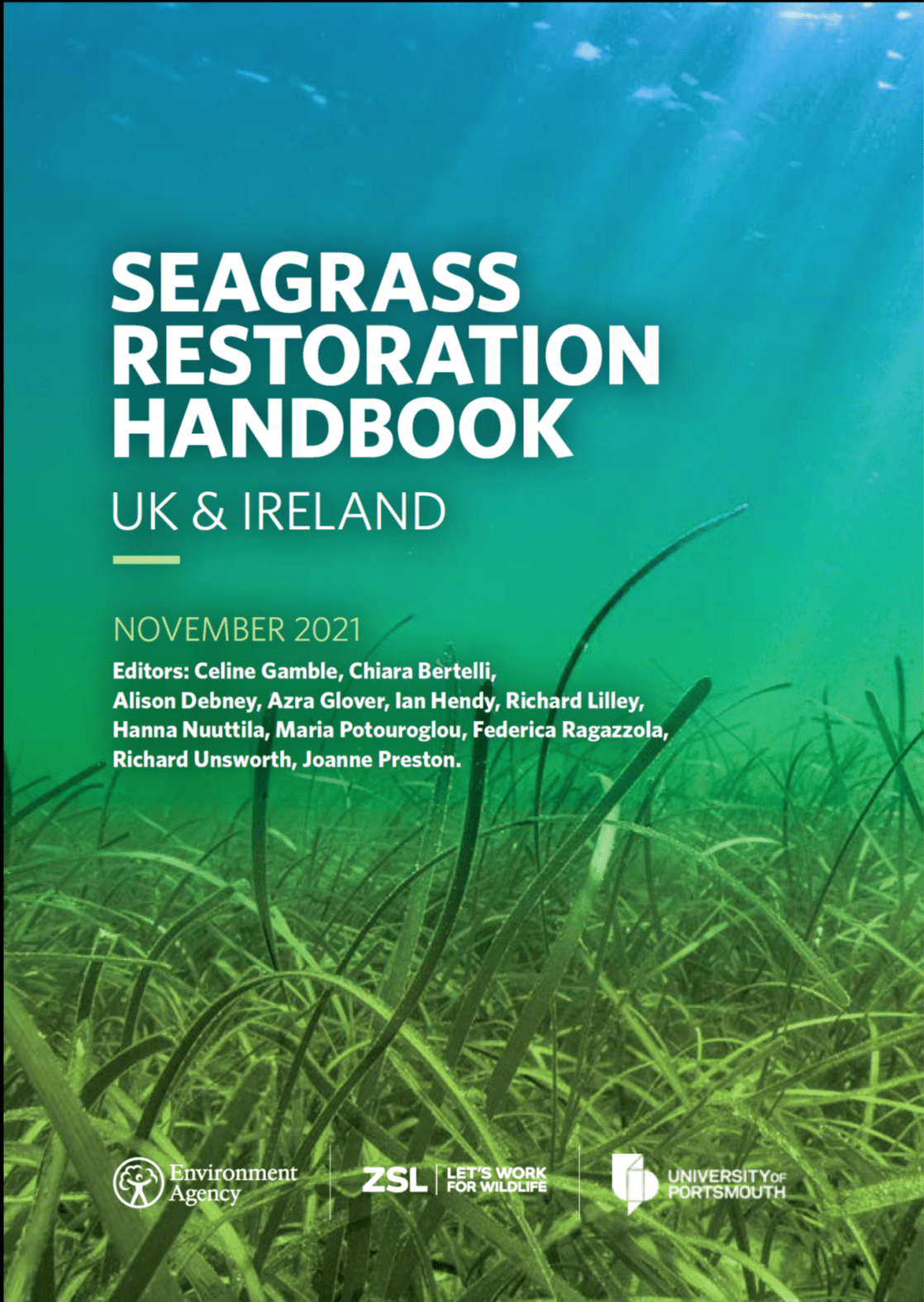Scotland's Coastal Revival: The Promise Of Seagrass Restoration

Table of Contents
The Ecological Importance of Seagrass Restoration in Scotland
Seagrass meadows are often underestimated, yet they are vital for the health of Scotland's coastal waters. Their restoration is not merely an environmental initiative; it's a cornerstone of a sustainable future for our marine ecosystems.
Biodiversity Hotspots
Seagrass meadows are incredibly biodiverse ecosystems, teeming with life and playing a crucial role in supporting a vast array of marine species. They are often referred to as the "nurseries of the sea," providing essential habitat and sustenance for countless organisms.
- Nurseries for commercially important fish species: Cod, haddock, and many other commercially valuable fish rely on seagrass meadows as critical spawning and nursery grounds. Protecting these habitats directly supports sustainable fisheries and the livelihoods of fishing communities.
- Habitat for crustaceans, shellfish, and seabirds: A rich tapestry of life thrives within and around seagrass beds. Crustaceans like crabs and shrimp, various shellfish, and even seabirds depend on these meadows for food and shelter. The intricate food web within these habitats is incredibly complex, highlighting the interconnectedness of marine life.
- Crucial feeding grounds for numerous species: Many marine animals, from small invertebrates to larger predators, rely on seagrass meadows as vital feeding grounds. The loss of these meadows directly impacts the entire marine food web, leading to population declines and ecosystem instability. The impact on marine biodiversity from seagrass loss is significant, leading to a reduction in species richness and overall ecosystem health.
The intricate food web within seagrass meadows highlights their importance. Their loss disrupts this delicate balance, triggering a cascade effect that impacts the entire ecosystem. The restoration of these vital habitats is crucial for maintaining marine biodiversity and ensuring the long-term health of Scotland's coastal waters.
Carbon Sequestration and Climate Change Mitigation
Beyond their biodiversity value, seagrass meadows are exceptionally effective carbon sinks, playing a pivotal role in climate change mitigation. Often referred to as "blue carbon," the carbon sequestration capabilities of seagrass surpass those of many terrestrial forests.
- More efficient carbon sink than many terrestrial forests: Seagrass meadows are remarkably efficient at capturing and storing atmospheric carbon dioxide (CO2). Their dense root systems trap sediment, locking away carbon for centuries.
- Contributes to reducing atmospheric CO2: By effectively sequestering carbon, seagrass restoration helps reduce the concentration of greenhouse gases in the atmosphere, mitigating the effects of climate change.
- Mitigating the effects of climate change: The restoration of seagrass meadows contributes significantly to global efforts in climate change adaptation and mitigation strategies. The scale of this contribution is substantial and warrants increased investment in seagrass conservation and restoration projects.
Scientific studies consistently demonstrate the significant carbon sequestration potential of seagrass. In Scotland, the restoration of even relatively small areas of seagrass can contribute substantially to national and global climate change mitigation targets. This "blue carbon" strategy offers a natural and effective solution to the climate crisis.
Coastal Protection and Erosion Control
Seagrass meadows provide invaluable coastal protection, acting as natural buffers against the damaging effects of erosion. Their presence significantly enhances the resilience of our shorelines.
- Reduces wave energy: The dense growth of seagrass dissipates wave energy, reducing the impact on the coastline and preventing erosion.
- Stabilizes sediments: Seagrass roots bind sediments together, preventing their erosion and contributing to the stability of the seabed.
- Protects shorelines from erosion: By reducing wave energy and stabilizing sediments, seagrass meadows act as a natural defense against coastal erosion, safeguarding both coastal communities and vital infrastructure.
- Safeguards coastal communities and infrastructure: The protective function of seagrass meadows has significant economic implications, protecting valuable property and reducing the costs associated with coastal erosion management.
The mechanical process by which seagrass reduces erosion is well-documented. The roots and rhizomes create a dense network that traps sediment and dissipates wave energy, minimizing the impact on the shoreline. This natural coastal defense offers significant economic benefits by protecting infrastructure and reducing the need for expensive artificial defenses.
Economic Benefits of Seagrass Restoration Projects
Investing in seagrass restoration is not merely an environmental endeavor; it's a smart economic strategy with far-reaching benefits.
Fisheries and Aquaculture
Restored seagrass meadows directly support thriving fisheries and enhance the productivity of aquaculture operations.
- Increased fish stocks: Seagrass meadows provide essential habitat and food sources, leading to increased populations of commercially important fish species.
- Improved shellfish yields: Many shellfish species rely on seagrass for food and shelter, resulting in improved yields in areas where seagrass is restored.
- Enhanced aquaculture productivity: Seagrass restoration can create more favorable conditions for aquaculture, leading to increased productivity and economic benefits.
- Potential for sustainable seafood production: By supporting healthy fish and shellfish populations, seagrass restoration contributes to the development of sustainable seafood production practices.
The economic impact on local fishing communities can be substantial. Increased fish stocks translate to higher catches, improved incomes, and the creation of new jobs related to sustainable fisheries management.
Tourism and Recreation
Healthy coastal ecosystems, including thriving seagrass meadows, attract tourists and generate significant economic activity.
- Increased tourism revenue: The presence of healthy seagrass beds, indicative of a pristine coastal environment, attracts tourists and boosts local economies.
- Creation of new recreational opportunities: Restored seagrass meadows offer exciting opportunities for ecotourism activities such as diving, kayaking, and wildlife watching.
- Enhanced coastal amenity value: The aesthetic value of healthy coastal ecosystems is undeniable, adding to the overall appeal of the area for tourists and residents alike.
Ecotourism initiatives linked to seagrass restoration can create new jobs and generate significant revenue for local communities. The aesthetic value of healthy coastal areas also increases property values and attracts investment, benefiting local economies.
Challenges and Future Directions for Seagrass Restoration in Scotland
Despite the significant benefits, challenges remain in ensuring the successful and widespread restoration of seagrass meadows in Scotland.
Funding and Resources
Securing sufficient funding for large-scale restoration projects is crucial for achieving ambitious goals. This requires a multifaceted approach.
- Government funding: Increased government investment in seagrass restoration is essential to support large-scale projects and long-term monitoring.
- Private investment: Engaging private sector companies with a commitment to environmental sustainability can unlock significant resources.
- Charitable donations: Raising public awareness and encouraging charitable donations can supplement government and private funding.
- Community involvement: Actively engaging local communities in restoration projects fosters ownership and ensures long-term sustainability.
A collaborative effort involving government, private sector, and community organizations is critical to secure the necessary funding and resources for successful seagrass restoration initiatives.
Monitoring and Evaluation
Regular monitoring and evaluation are vital to assess the success of restoration efforts and guide future initiatives.
- Regular monitoring of seagrass growth: Tracking the growth and health of restored seagrass meadows is essential to determine the effectiveness of different restoration techniques.
- Assessment of biodiversity: Monitoring changes in biodiversity within and around restored seagrass meadows provides valuable information on ecosystem recovery.
- Evaluation of ecosystem services: Regularly assessing the provision of ecosystem services, such as carbon sequestration and coastal protection, helps determine the overall impact of restoration projects.
Scientific data collection and analysis are crucial for guiding future restoration efforts and ensuring that investments are used effectively. This ensures that restoration strategies are adapted and improved over time, leading to more effective and impactful outcomes.
Public Awareness and Engagement
Raising public awareness about the importance of seagrass is essential for securing long-term support for restoration projects.
- Community outreach programs: Engaging local communities through educational programs and workshops can foster a sense of ownership and stewardship.
- Educational initiatives: Integrating seagrass education into school curricula can raise awareness among future generations.
- Media campaigns: Utilizing various media platforms to communicate the benefits of seagrass restoration can reach a wider audience.
Effective communication is vital to ensure that the public understands the importance of seagrass meadows and supports the ongoing effort to restore these valuable ecosystems.
Conclusion
Seagrass restoration offers a powerful and multifaceted solution to many of the challenges facing Scotland's coast. The ecological, economic, and social benefits are undeniable. By investing in these projects, we can safeguard biodiversity, mitigate climate change, boost local economies, and create healthier, more resilient coastal communities. From supporting sustainable fisheries and protecting our shorelines to enhancing tourism and mitigating climate change, the advantages of seagrass restoration are significant and far-reaching. Let's work together to support and expand seagrass restoration initiatives across Scotland, ensuring a thriving future for our precious marine environment. Join the movement to protect our coastline through seagrass restoration today!

Featured Posts
-
 Nba History Made Russell Westbrooks Impact On The Jazz Nuggets Game
May 04, 2025
Nba History Made Russell Westbrooks Impact On The Jazz Nuggets Game
May 04, 2025 -
 Ufc 314 Co Main Event Chandler Vs Pimblett Odds And Predictions
May 04, 2025
Ufc 314 Co Main Event Chandler Vs Pimblett Odds And Predictions
May 04, 2025 -
 Ajagbas Focused Training Regime For Bakole Clash
May 04, 2025
Ajagbas Focused Training Regime For Bakole Clash
May 04, 2025 -
 Onde Assistir Corinthians X Santos Ao Vivo Horario E Escalacoes
May 04, 2025
Onde Assistir Corinthians X Santos Ao Vivo Horario E Escalacoes
May 04, 2025 -
 Canadiens Vs Oilers Your Morning Coffee Hockey Recap And Outlook
May 04, 2025
Canadiens Vs Oilers Your Morning Coffee Hockey Recap And Outlook
May 04, 2025
Latest Posts
-
 2025 Kentucky Derby Festival Queen Hailing From Georgetown
May 05, 2025
2025 Kentucky Derby Festival Queen Hailing From Georgetown
May 05, 2025 -
 Georgetown Womans Kentucky Derby Festival Queen Victory A 2025 Triumph
May 05, 2025
Georgetown Womans Kentucky Derby Festival Queen Victory A 2025 Triumph
May 05, 2025 -
 Renovation Race Against Time Churchill Downs Prepares For Kentucky Derby
May 05, 2025
Renovation Race Against Time Churchill Downs Prepares For Kentucky Derby
May 05, 2025 -
 Kentucky Derby 2024 Final Preparations At Churchill Downs
May 05, 2025
Kentucky Derby 2024 Final Preparations At Churchill Downs
May 05, 2025 -
 Churchill Downs Undergoes Major Renovations Before Kentucky Derby
May 05, 2025
Churchill Downs Undergoes Major Renovations Before Kentucky Derby
May 05, 2025
